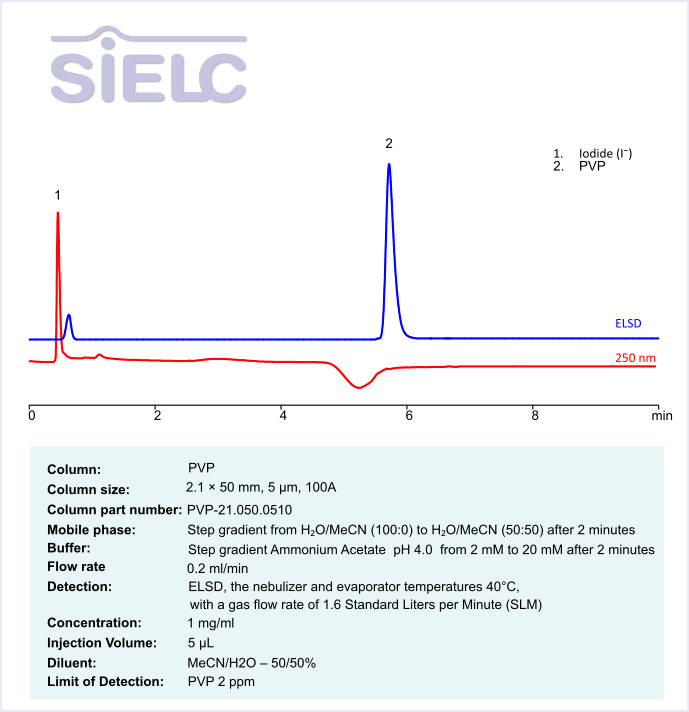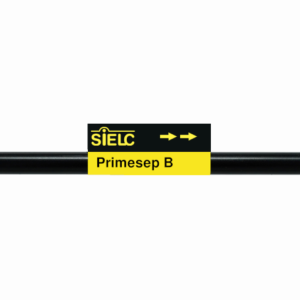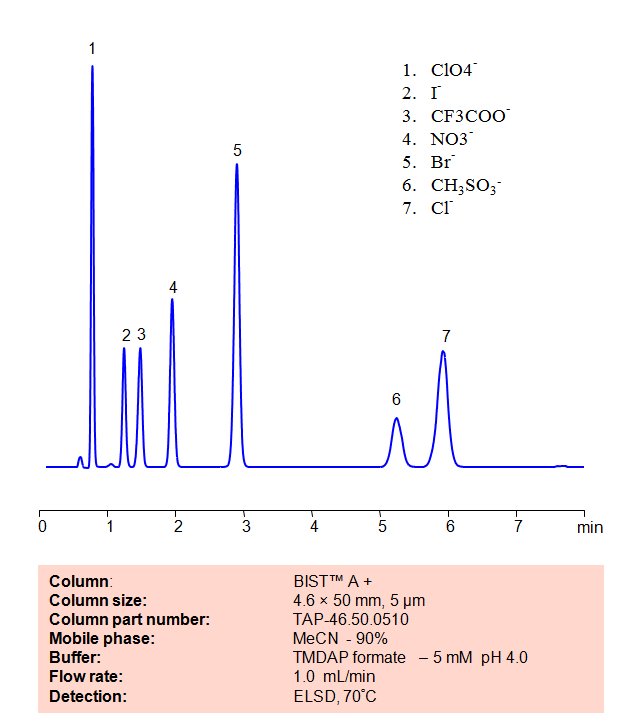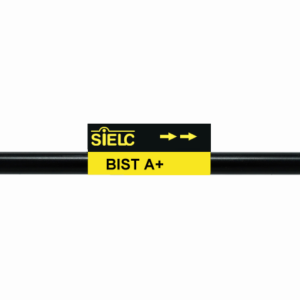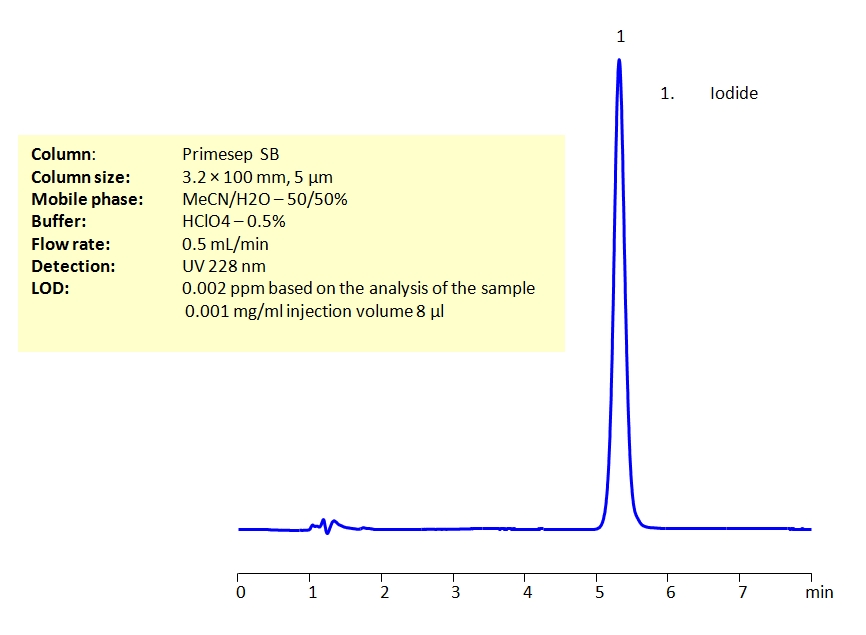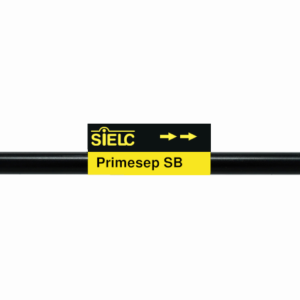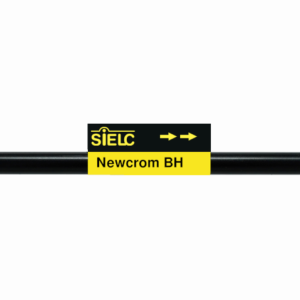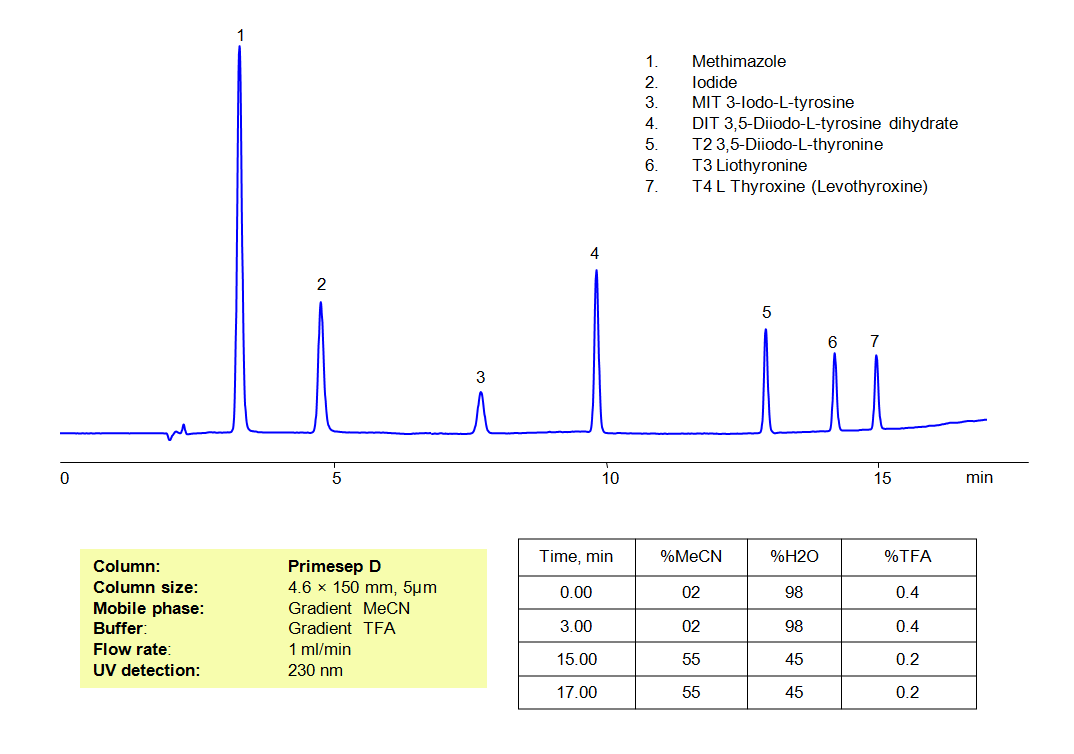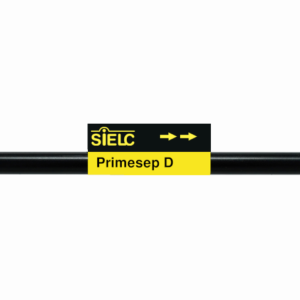| CAS Number | 20461-54-5 |
|---|---|
| Molecular Formula | I- |
| Molecular Weight | 126.9045 |
| InChI Key | XMBWDFGMSWQBCA-UHFFFAOYSA-M |
| LogP | 2.9 |
| Synonyms |
|
Applications:
UV-Vis Spectrum of Iodide
August 4, 2025
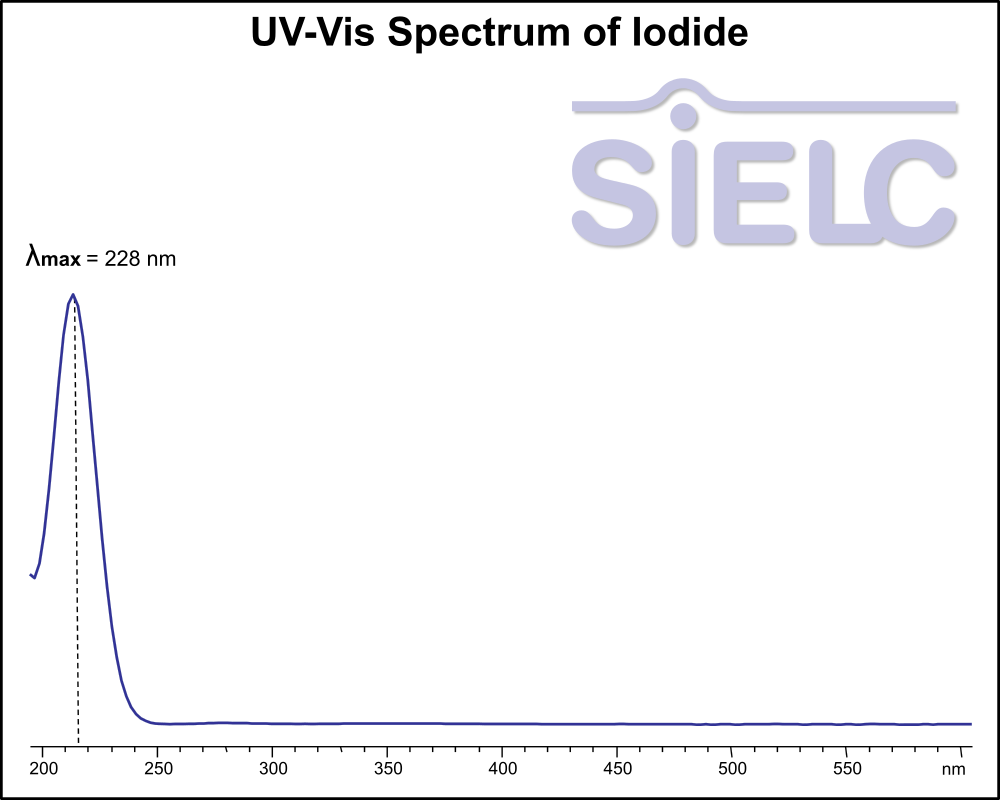
For optimal results in HPLC analysis, it is recommended to measure absorbance at a wavelength that matches the absorption maximum of the compound(s) being analyzed. The UV spectrum shown can assist in selecting an appropriate wavelength for your analysis. Please note that certain mobile phases and buffers may block wavelengths below 230 nm, rendering absorbance measurement at these wavelengths ineffective. If detection below 230 nm is required, it is recommended to use acetonitrile and water as low UV-transparent mobile phases, with phosphoric acid and its salts, sulfuric acid, and TFA as buffers.
For some compounds, the UV-Vis Spectrum is affected by the pH of the mobile phase. The spectra presented here are measured with an acidic mobile phase that has a pH of 3 or lower.

HPLC Method for Separation Povidone-iodine (PVP-I) on PVP Column
July 14, 2025
HPLC Method for Iodide, PVP on PVP by SIELC Technologies
High Performance Liquid Chromatography (HPLC) Method for Analysis of Iodide, PVP
Polidone Iodide (Povidone-Iodine / PVP-I)
Polidone Iodide, also known as Povidone-Iodine (PVP-I), is a widely used antiseptic made from iodine and polyvinylpyrrolidone (PVP). This combination allows for a slow, sustained release of iodine, enhancing antimicrobial effects while reducing irritation.
PVP (Polyvinylpyrrolidone): A water-soluble synthetic polymer that acts as:
- Stabilizer
- Emulsifier
- Solubilizer
- Protective colloid
It helps form a stable complex with iodine, improving its medical use.
Iodine: The active antimicrobial agent, effective against:
- Bacteria
- Viruses
- Fungi
- Protozoa
Slow release from the PVP complex ensures long-lasting, gentle antiseptic action.
Iodide, PVP can be retained and analyzed using the PVP column. The analysis utilizes an step gradient method with a simple mobile phase consisting of water, acetonitrile (MeCN), and ammonium acetate. Detection is performed using ELSD.
| Column | Cannsep A, 2.1 x 100 mm, 5 µm, 100 A, dual ended |
| Mobile Phase | Step gradient MeCN/H2O |
| Buffer | Ammonium Acetate pH 4.0 – 20 mM |
| Flow Rate | 0.4 ml/min |
| Detection | ELSD |
| LOD | PVP 2 ppm |
Application Column
Cannsep A
Column Diameter: 2.1 mm
Column Length: 100 mm
Particle Size: 5 µm
Pore Size: 100 A
Column options: dual ended
PVP

HPLC Method for Analysis of Iodide on Primesep B Column
January 31, 2023
HPLC Method for Analysis of Iodide on Primesep B by SIELC Technologies
Separation type: Liquid Chromatography Mixed-mode
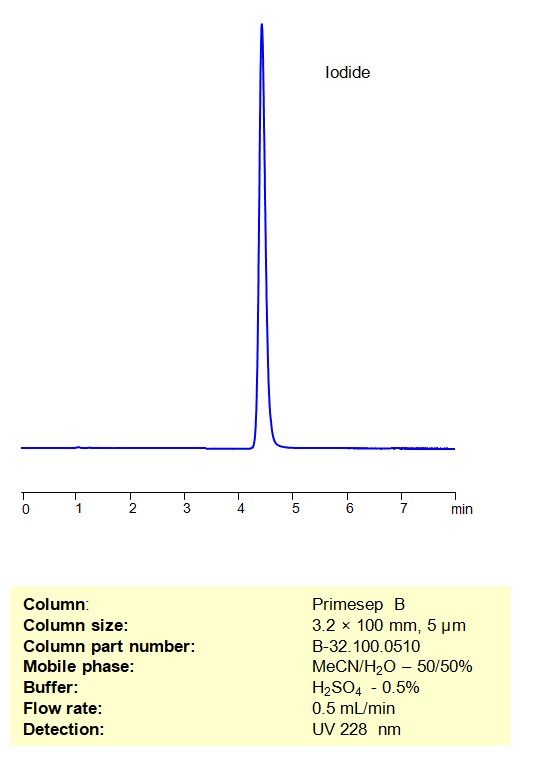
Iodide is an ion with the symbol I–. There is currently a worldwide iodine deficiency, which is a leading preventable cause of intellectual disability, has caused some governments to mandate iodized salt to be sold. It is naturally occurring as a mineral, Iodargyrite.
Iodide can be retained and analyzed using the [mode] stationary phase column. The analysis utilizes an isocratic method with a simple mobile phase consisting of water and acetonitrile (MeCN) with a perchloric acid buffer. Detection is performed using UV.
You can find detailed UV spectra of Iodide and information about its various lambda maxima by visiting the following link.
High Performance Liquid Chromatography (HPLC) Method for Analysis of Iodide
Condition
| Column | Primesep B, 3.2 x 100 mm, 5 µm, 100 A, dual ended |
| Mobile Phase | MeCN/H2O – 50/50% |
| Buffer | H2SO4 – 0.5% |
| Flow Rate | 0.5 ml/min |
| Detection | UV 228 nm |
| Peak Retention Time | 4.61 min |
Description
| Class of Compounds | Inorganic |
| Analyzing Compounds | Iodide |
Application Column
Primesep B
Column Diameter: 3.2 mm
Column Length: 100 mm
Particle Size: 5 µm
Pore Size: 100 A
Column options: dual ended

HPLC Method for Analysis of Inorganic anions on BIST™A+ Column
July 7, 2022
Application Column
BIST A+
Column Diameter: 4.6 mm
Column Length: 50 mm
Particle Size: 10 µm
Pore Size: 100 A
Column options: dual ended
Chloride
Iodide
Methanesulfonic Acid
Nitrate
Perchlorate
TFA (Trifluoroacetic Acid)

HPLC Determination of Iodide on Primesep SB
March 31, 2021
HPLC Method for Iodide on Primesep SB by SIELC Technologies
High Performance Liquid Chromatography (HPLC) Method for Analysis of Iodide.
Iodide is an ion with the symbol I–. There is currently a worldwide iodine deficiency, which is a leading preventable cause of intellectual disability, has caused some governments to mandate iodized salt to be sold. It is naturally occurring as a mineral, Iodargyrite.
Iodide can be retained and analyzed using the Primesep SB stationary phase column. The analysis utilizes an isocratic method with a simple mobile phase consisting of water and acetonitrile (MeCN) with a perchloric acid buffer. Detection is performed using UV.
| Column | Primesep SB, 3.2 x 100 mm, 5 µm, 100 A, dual ended |
| Mobile Phase | MeCN/H2O – 50/50% |
| Buffer | HClO4 – 0.5% |
| Flow Rate | 0.5 ml/min |
| Detection | UV 228 nm |
| Class of Compounds |
Ion |
| Analyzing Compounds | Iodide |
Application Column
Primesep SB
Column Diameter: 3.2 mm
Column Length: 100 mm
Particle Size: 5 µm
Pore Size: 100 A
Column options: dual ended

HPLC Separation of Inorganic Anions on Newcrom BH Column
October 23, 2019
HPLC Method for Sodium, Phosphate, Chloride, Bromide, Nitrate, Sulfate, Iodine, Perchlorate, Iodide on Newcrom BH by SIELC Technologies
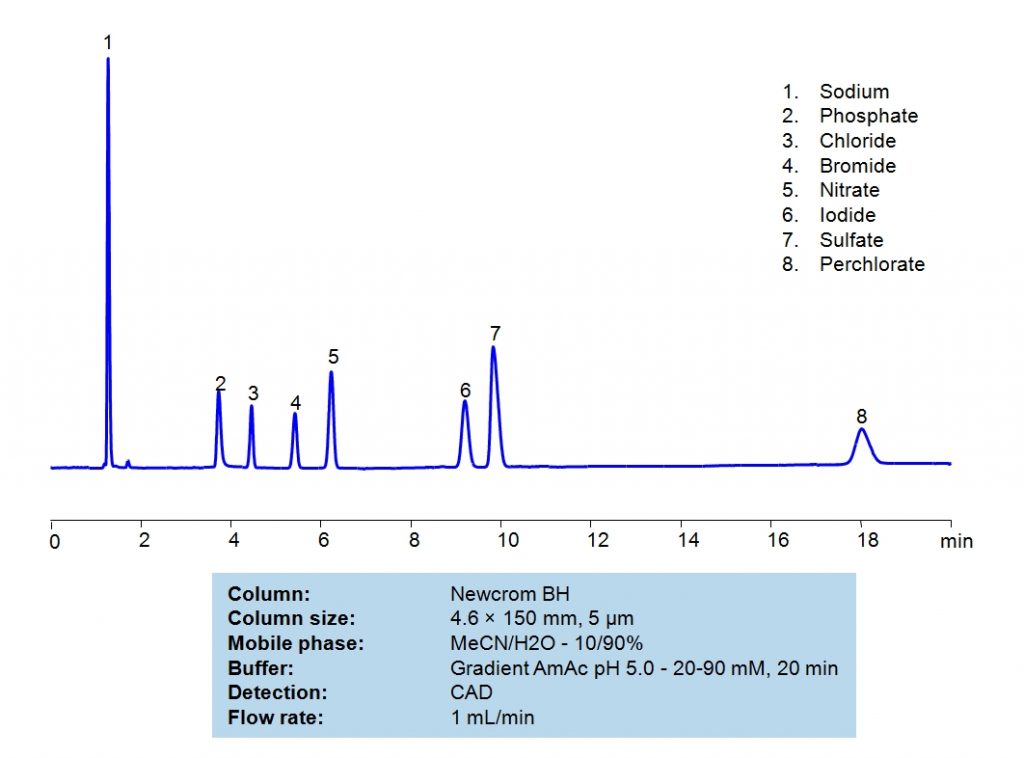
High Performance Liquid Chromatography (HPLC) Method for Analysis of Sodium, Phosphate, Chloride, Bromide, Nitrate, Sulfate, Iodine, Perchlorate, Iodide
Sodium, which has a chemical symbol of Na, is a soft alkali metal that is highly reactive. It is found in abundance in everyday materials like table salt, sea water, and even the Earth’s crust. It is crucial for the body’s function and fluid balance.
Phosphate, PO43-, is a compound that plays an important part in biological energy transfer. It contains phosphorus, which is also a key component in bones and teeth. It is also a buffer, which helps maintain pH levels in a body.
Chloride is typically used to refer to a compound or molecule that contains a chlorine anion: Cl–. It is an electrolyte that is essential for bodily functions including blood pH, fluid balance, cellular functions, and more. Imbalance of chloride can indicate underlying health problems.
Bromide is typically used to refer to a compound or molecule that contains a bromide anion: Br–. It is often found in anticonvulsants, flame-retardant materials, and cell stains.
Nitrate, NO3–, is a compound of nitrogen and oxygen. It is essential as a nutrient in plants; therefore, it is often used in fertilizers. It is easily found in leafy greens. While it is important for cardiovascular health, too high of exposure to it can be dangerous.
Iodide, the Ionic form of Iodine, I– is essential for thyroid hormone production. Lack of it can lead to iodine deficiency disorders. It is typically found in Iodized salt and occasionally as an antiseptic.
Sulfate is an ionic chemical with the formula SO42-. In nature, it is usually found in geodes like gypsum. It is also created in atmosphere from sulfur dioxide. It is used for a variety of applications, but most notably, coloring wood and creating light-reflecting paints.
Perchlorate is an inorganic compound with the formula ClO4–. It is most typically used for explosives. For example, fireworks and rocket propellants. Due to it’s water solubility, it can easily contaminate it. When ingested, it can pose a health risk and cause developmental harm.
Sodium, Phosphate, Chloride, Bromide, Nitrate, Sulfate, Iodine, Perchlorate, Iodide can be retained and analyzed using the Newcrom BH stationary phase column. The analysis utilizes an isocratic method with a simple mobile phase consisting of water and acetonitrile (MeCN) with a Ammonium Acetate buffer. Detection is performed using CAD.
| Column | Newcrom BH, 4.6 x 150 mm, 5 µm, 100 A, dual ended |
| Mobile Phase | MeCN/H2O – 10/90% |
| Buffer | Gradient AmAc pH 5.0 – 20-90 mM , 20 min |
| Flow Rate | 1.0 ml/min |
| Detection | CAD (Corona) (MS-compatible mobile phase) |
Application Column
Newcrom BH
Column Diameter: 4.6 mm
Column Length: 150 mm
Particle Size: 5 µm
Pore Size: 100 A
Column options: dual ended
Chloride
Iodide
Iodine
Nitrate
Perchlorate
Phosphate
Sodium
Sulfate

HPLC Method for Analysis of Iodide and Thyroid Hormones
October 30, 2018
HPLC Method for Iodine, Methimazole, Levothyroxine (T4), 3,5-Diiodo-L-thyronine (T2), 3,5-Diiodo-L-tyrosine dihydrate (DIT), 3-Iodo-L-tyrosine (MIT), Liothyronine (T3), Iodide on Primesep D by SIELC Technologies
High Performance Liquid Chromatography (HPLC) Method for Analysis of Iodine, Methimazole, Levothyroxine (T4), 3,5-Diiodo-L-thyronine (T2), 3,5-Diiodo-L-tyrosine dihydrate (DIT), 3-Iodo-L-tyrosine (MIT), Liothyronine (T3), Iodide
Iodine is an important element in production of thyroid hormones, T3 and T4, which are essential regulators of organism’s metabolism. The glands’ concentration of Iodide, hormones T3 and T4, along with their precursors: 3,5-Diiodo-L-thyronine (T2), 3,5-Diiodo-L-tyrosine (DIT), and 3-Iodo-L-tyrosine (MIT) can now be studied simultaneously with this HPLC method. In order to analyze the hydrophobic hormones along with iodide (a very polar inorganic ion) a special mixed-mode column, Primesep D, was used. This column provides both strong hydrophobic and anion exchange properties. The Primesep D silica-bonded ligand is comprised of a long alkyl chain and an embedded amino functional group. The TFA was used as an ionic modifier to provide stable acidic pH and sufficient ion strength for the mobile phase. The mobile phase composition is suitable for UV, MS, ELSD, and CAD detection.
| Column | Primesep D, 4.6 x 150 mm, 5 µm, 100 A, dual ended |
| Mobile Phase | MeCN |
| Buffer | TFA |
| Flow Rate | 1.0 ml/min |
| Detection | UV, 230 nm |
| Class of Compounds | Drug, Hydrophilic, Ionizable, Supplements |
| Analyzing Compounds | Iodine, Methimazole, Levothyroxine (T4), 3,5-Diiodo-L-thyronine (T2), 3,5-Diiodo-L-tyrosine dihydrate (DIT), 3-Iodo-L-tyrosine (MIT), Liothyronine (T3), Iodide |
Application Column
Primesep D
Column Diameter: 4.6 mm
Column Length: 150 mm
Particle Size: 5 µm
Pore Size: 100 A
Column options: dual ended
3,5-Diiodo-L-tyrosine dihydrate (DIT)
3-Iodo-L-tyrosine (MIT)
Iodide
Iodine
Levothyroxine (T4)
Liothyronine (T3)
Methimazole


